Index
Page 1 of 9

Review: The fastest air-cooled GTX 480 around
It’s been a few months since we’ve heard about Point of View and TGT Tuning team’s joint efforts on overclocking graphics cards. So far, the work has paid off and the offspring, GTX 460 BEAST, already has the title of the fastest factory overclocked GTX 460. Now that the dust has settled around the aforementioned card, we’re ready to talk about other cards in the offer. Today, we’re talking about GTX 480, so far the fastest Nvidia DirectX 11 card which, with a little help from TGT team, runs like the wind.
Unlike the reference card where the GPU runs at 700MHz, shaders at 1400MHz and the memory at 3700MHz, Point of View/TGT Ultra Charged card runs at 763MHz for the GPU, 1536MHz for the shaders and 3800MHz for the memory.
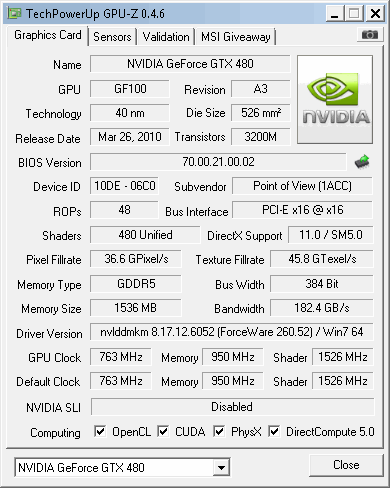
GTX 480 was announced at the end of March and can currently be found at about €400. GTX 480 Ultra Charged card, which we’re discussing today, is priced at about €460, here .
We’re talking about a really powerful graphics card with plenty of potential. The stronghold of this chip is tessellation, a very important part of DirectX 11 and this is what this chip is really good at. Unfortunately, the potential has been severely limited by high temperatures and cooling noise. It has long been noted that with adequate cooling, the GTX 480 can run much, much better, and partners naturally heard the call. Point of View and TGT team are preparing a water cooled GTX 480 card with a JetStream block that will carry the branding BEAST. We hear that the GPU clock will run at 800MHz but it’s quite possible that we’ll see even higher clocks as water cooling usually joins silence and efficient cooling.
In case you don’t fancy water cooling but still want a faster card, Point of View and TGT team still have you covered as they offer two GTX 480 Ultra Charged cards. The card we have on our test today features reference PCB design and reference cooling whereas the other card comes with Arctic Cooling’s cooler, which naturally means lower temperatures and lower noise levels. Those who’ve tried the GTX 480 know that the card is too loud and too hot even at reference clocks.
We must admit we’ve been surprised by GTX 480 Ultra Charged card’s overclocking potential. We had no trouble pushing the GPU to 850MHz and get 15-20% higher performance compared to the reference card.
The following photos show the two Point of View / TGT Ultra Charged cards.
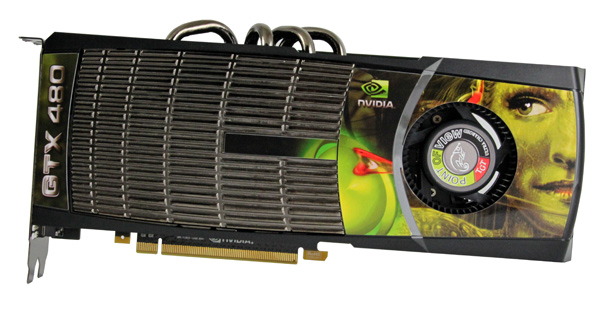
Geforce GTX 480 UC is a dual-slot card, which is common with high end cards, but it is not quite common seeing a reference design with a heatpipe solution. In an effort to deliver thermals that would satisfy the GTX 480’s hot ticker, most of the card’s “hood” is actually the heatsink itself. A glance at Geforce GTX 480 would suggest that the card comes with 4 heatpipes, although the card packs 5 in total.
GTX 480 has TDP of 250W (at idle consumes about 55W) and it needs external power via one 8-pin and one 6-pin connector. The I/O panel features two standard dual link DVI outs as well as one miniHDMI. The card packs a total of 1536MB of GDDR5 memory.
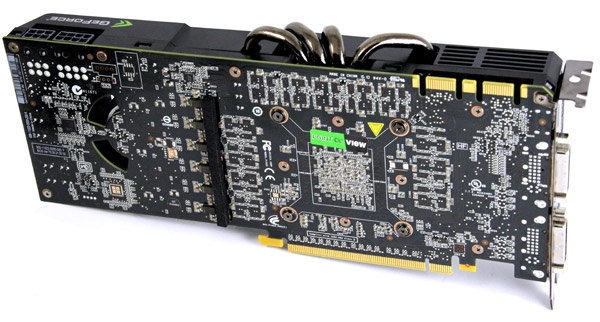
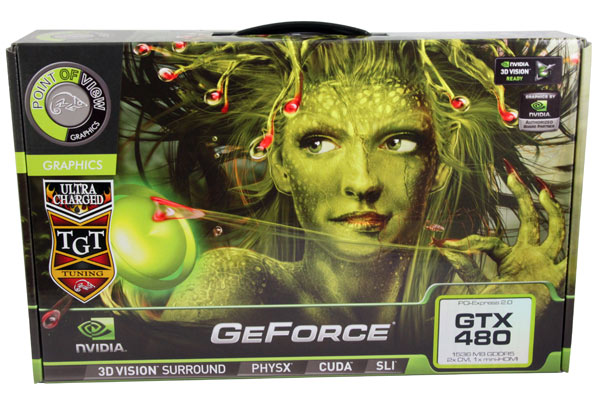
The triple-fan cooler features a total of five heatpipes and 84 fins combined with copper block and three ultra quiet 92mm PWM fans with low noise impeller.
The new POV/TGT "Made in Germany" GTX 480 UltraCharged TFC card should be available in retail/e-tail as of September 20th.
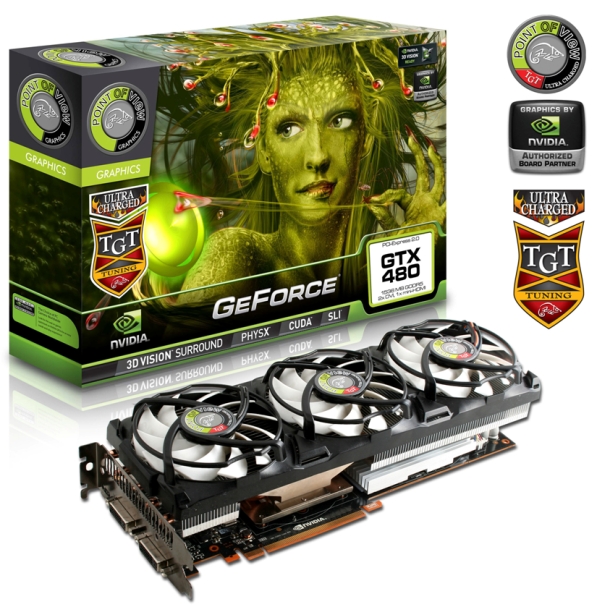
Prev Next »


